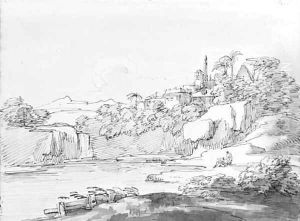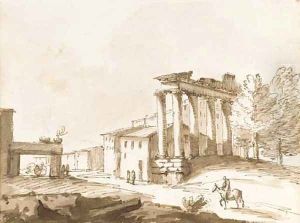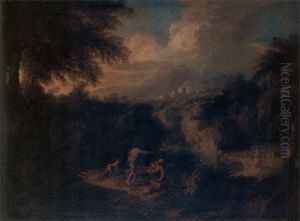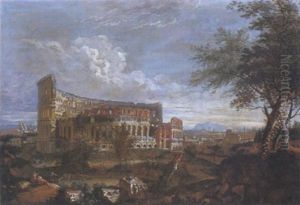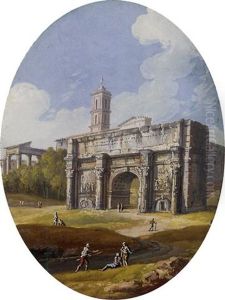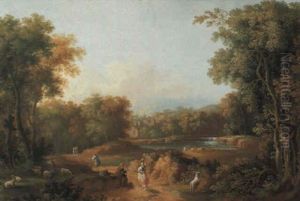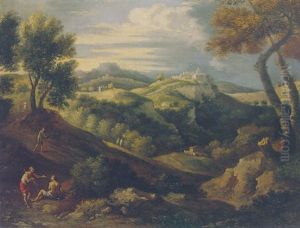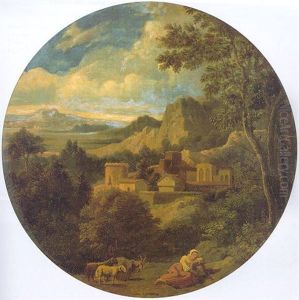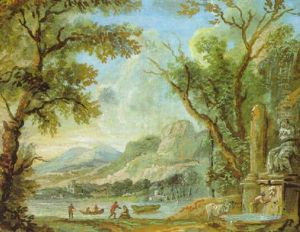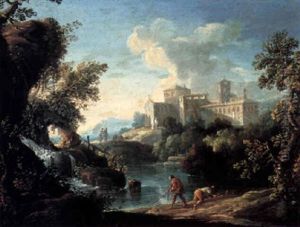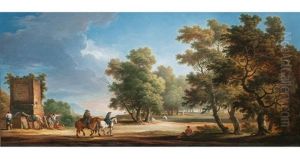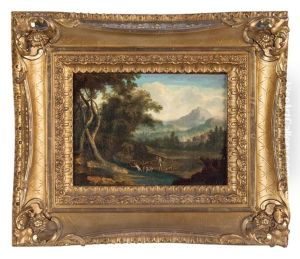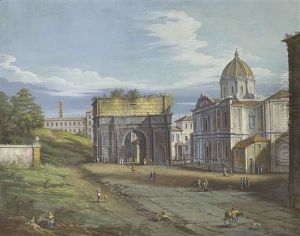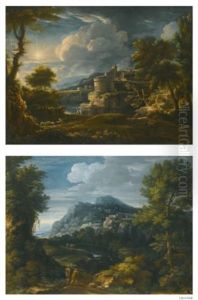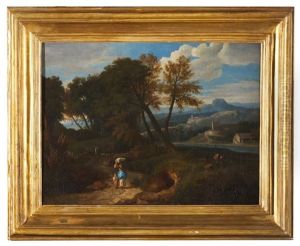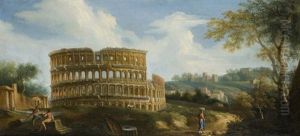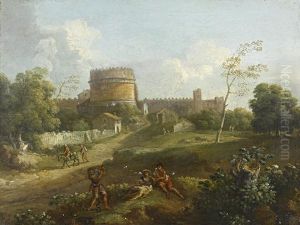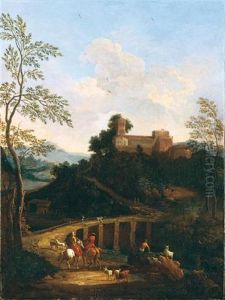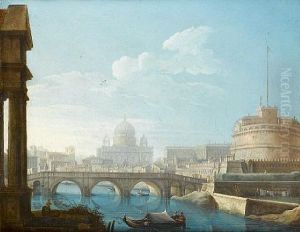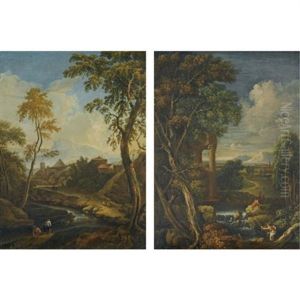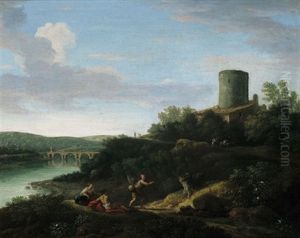Giovanni Battista Busiri Paintings
Giovanni Battista Busiri was an Italian painter and engraver born in 1698 in Rome, Italy. He is primarily known for his vedute, or detailed paintings and engravings of city views, particularly of Rome. Busiri's work is considered part of the vedutismo tradition, which includes other renowned artists such as Giovanni Paolo Pannini and Canaletto, who were famous for their cityscapes and architectural works.
Busiri received his initial artistic training in the workshop of Benedetto Luti, a Florentine painter who was influential in the Rome of his time. Busiri's style was also influenced by the works of Giovanni Paolo Panini, from whom he learned the importance of precise architectural representation combined with lively human figures to create a sense of scale and activity in his scenes.
Throughout his career, Busiri produced numerous etchings and paintings that depicted Rome's ancient and modern architecture, its festivities, and its daily life. His works were sought after by collectors, including travelers on the Grand Tour—a cultural pilgrimage undertaken by wealthy Europeans to visit the art and architecture of Italy and other countries. His vedute served not only as souvenirs for these Grand Tourists but also as a means for those who could not travel to experience the grandeur of Rome.
Busiri's artistic output included both original compositions and reproductions of works by other artists. Despite the popularity of his vedute, little is known about his personal life, and he remains a relatively obscure figure compared to other artists of the vedutismo movement. Giovanni Battista Busiri's contributions to the genre of cityscape painting helped to document the urban landscape of 18th-century Rome and provided future generations with a visual record of the city's historical settings.
He died in 1757 in his hometown of Rome. Today, Busiri's works are preserved in various art collections and continue to be studied for their artistic and historical value.





